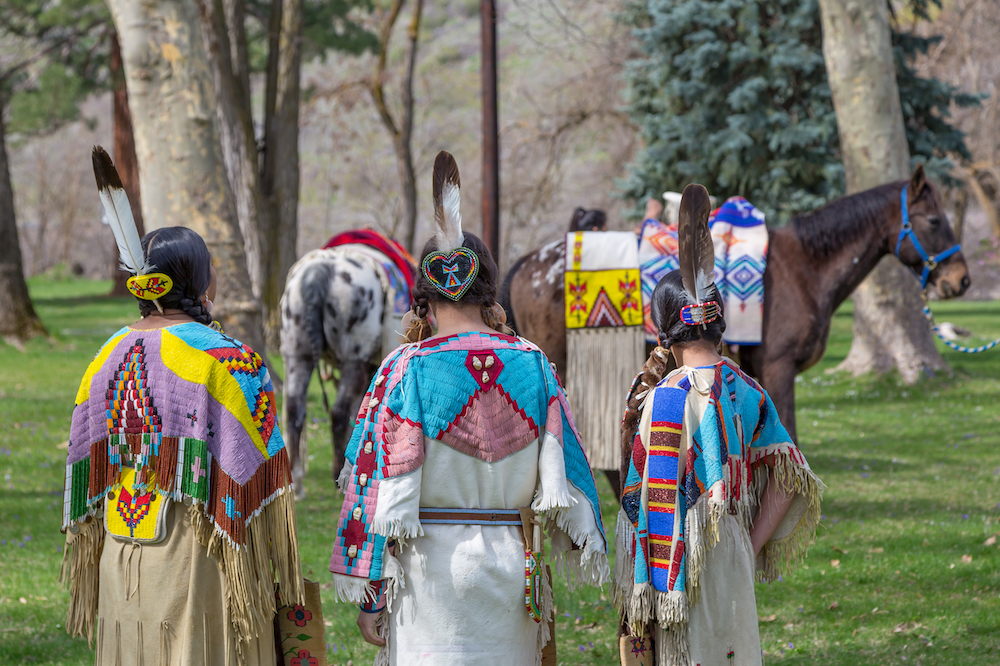Indigenous tourism manifests differently across the globe, from experiencing the rugged Australian Outback with knowledgeable Aboriginal guides to learning about ancient Arctic traditions through Indigenous-led cultural experiences in Northern Canada, but what about here in the United States—does Indigenous tourism exist domestically, and if so, why should travelers learn about it, support it, and experience these authentic cultural encounters for themselves during their journeys across America?
Indigenous tourism is rapidly emerging as a significant economic opportunity within the global travel industry, and for this year’s National Native American Heritage Month, we’re taking an in-depth look at what this growing and culturally important sector looks like specifically in the United States, how it benefits Indigenous communities, and why authentic cultural experiences matter more than ever to conscious travelers.
What Is Indigenous Tourism and Why Does It Matter?
First, let’s clearly define Indigenous tourism and discuss its profound importance in the global tourism economy and its role in cultural preservation and economic empowerment.
Indigenous tourism is defined as tourism initiatives ranging from intimate homestay programs to professional tour operator businesses created and operated by Indigenous peoples in ways that authentically showcase their culture, traditions, and deep connection to place, while simultaneously sustaining their communities economically. This could be a tribal venture collectively managed by Native nations, or a single Indigenous-owned business run by individual entrepreneurs.
The George Washington University International Institute of Tourism Studies identifies a major benefit of Indigenous-led tourism experiences: “By providing a reliable source of income, tourism can offer Indigenous communities an incentive to maintain their cultural heritage and natural heritage. Perhaps most importantly, by hosting visitors, Indigenous people can share their lands and culture on their terms.”
This addresses travelers asking “What is Indigenous tourism?” and “Why is Indigenous tourism important?” with clear definitions and compelling benefits.
Self-Determination Through Tourism
Besides the obvious economic benefit, there’s something profoundly deeper involved with Indigenous-led tourism ventures: self-determination and the power to tell their own stories authentically rather than having their narratives controlled by outside voices.
“Our histories don’t appear in written form because most of our stories were verbal traditions, so it’s only now that many of our Native Nations are willing to open up and share their stories,” explained Sherry L. Rupert (Paiute/Washoe), CEO of the American Indigenous Tourism Association (formerly AIANTA).
“Visitors are increasingly recognizing the profound value of hearing authentic stories—rooted in thousands of years of tradition and passed down through generations—especially when shared by Indigenous people from the very communities they represent,” Rupert continued.
“At the same time, Indigenous storytellers are also deepening their own understanding and strengthening their cultural identity through the act of teaching and connecting with visitors,” she added. “This powerful exchange not only fosters mutual respect and understanding but also plays a vital role in preserving and revitalizing Indigenous cultures. By choosing Indigenous-owned and governed tourism ventures, travelers directly support Indigenous self-determination.”
This powerful statement addresses conscious travelers asking “How does Indigenous tourism help communities?” and “What’s the cultural impact of Indigenous tourism?” with meaningful answers.
Indigenous Tourism’s Economic Growth Trajectory
While we in the United States might lag behind other countries in their respectful acknowledgement and support of Indigenous peoples and their rights, Indigenous tourism is only expected to become significantly more important in the decades ahead as travelers seek authentic connections.
A comprehensive report from October 2024 by the World Travel & Tourism Council predicts that Indigenous tourism will contribute $67 billion to the global tourism economy by 2034, demonstrating a compound annual growth rate of 4.1 percent across the next decade—an impressive expansion trajectory.
Travel destinations like Canada are taking proactive notice: our northerly neighbor already supports over 2,000 Indigenous-owned tourism businesses, which have created over 39,000 jobs, generating CA$1.7 billion to the nation’s tourism economy in 2017 alone—a number that has certainly grown substantially since then.
In the United States, according to the American Indigenous Tourism Association, American Indian, Alaska Native, and Native Hawaiian-owned businesses as a whole generated $15.7 billion to the U.S. travel economy, supporting 210,000 hospitality employees across over 133,000 hospitality businesses—demonstrating massive economic impact.
Remarkably, one in four Indigenous-owned businesses in the U.S. operates in the travel and tourism sector, highlighting the industry’s importance to Native economic development.
These statistics address travelers and investors asking “How big is Indigenous tourism?” and “Indigenous tourism economic impact?” with concrete data.
What’s Driving Growth in Indigenous Travel Experiences?
“People want to experience something authentic,” Rupert emphasized. “The desire has been there for many years, but the COVID-19 pandemic certainly heightened it. Visiting our American Indigenous communities is a departure from everyday America. We have 574 federally recognized tribes across this nation—plus many more that are state-recognized tribes or tribes seeking federal recognition—and they are sovereign nations, each with their own language, culture, land base, and constitution.”
“We are the first people of this nation, and our domestic neighbors should know more about us,” Rupert stated passionately. “A lot of our Indigenous communities are open to that, and I think more people should take advantage of the opportunity. American Indian, Alaska Native and Native Hawaiian-owned hospitality businesses contribute $11.6 billion in annual sales to the tourism and hospitality sector in the U.S.—so yes, travelers certainly have a strong desire to experience something authentic.”
By providing historically marginalized groups with powerful economic opportunities, Indigenous-led tourism can transform lives and communities—and positively impact the environment through more knowledgeable stewardship practices rooted in thousands of years of connection to the land and sustainable resource management.
“Our people have been stewards of these lands for thousands of years and have a deep spiritual connection to those lands,” said Rupert. “Our Indigenous storytellers have stories passed down to them from generations of their people. The people who visit our communities benefit from that deep connection and those ancestral stories on a level that is hard to put into words but rather felt deeply within one’s soul.”
How to Experience Indigenous Tourism Across America
Indigenous tourism experiences can be found all across the United States, from Hawai’i to Vermont, from Alaska to Florida. That means it’s easier than you might think to participate in an Indigenous-led experience the next time you travel domestically to virtually any region.
You just have to know where to find them and how to book responsibly.
The American Indigenous Tourism Association offers a helpful website called Destination Native America to help travelers begin their search for Indigenous-led tourism experiences throughout the country.
It features a helpful interactive map of affiliated ventures, a comprehensive events calendar, curated lists of experiences organized by category or geographic region, and much more—all available in eleven different languages, including English. The website also provides a helpful mobile app for travelers to utilize while traveling.
Travelers can discover Indigenous-owned markets, cultural tour operators, Native-owned lodgings, agrotourism experiences, craft workshops, cultural centers, powwows, and more, all across the nation.
What’s more, travelers are strongly encouraged to visit the American Indigenous Tourism Association’s website to find helpful guides on best practices when visiting Indigenous communities, which can be accessed on the “Know Before You Go” resource page covering cultural protocols and respectful tourism.
This practical guidance addresses travelers asking “How to visit Indigenous communities respectfully?” and “Where to find Indigenous tourism experiences in USA?” with actionable resources.
Types of Indigenous Tourism Experiences Available
Indigenous tourism in the United States encompasses diverse experience categories including cultural tours of historic sites and sacred lands, traditional craft workshops teaching basket weaving, pottery, beadwork, and textile arts, culinary experiences featuring traditional foods and indigenous agriculture, storytelling sessions with tribal elders, powwows and cultural celebrations open to respectful visitors, guided nature experiences showcasing traditional ecological knowledge, Indigenous-owned accommodations from hotels to camping experiences, museum visits at tribal cultural centers, and art gallery tours featuring contemporary Native artists.
Regional Indigenous Tourism Highlights
Different regions offer distinct Indigenous tourism opportunities: The Southwest features Pueblo communities, Navajo Nation, and Apache experiences; The Pacific Northwest offers Coast Salish traditions and totem pole culture; Alaska provides Alaska Native cultural centers and indigenous art; Hawai’i showcases Native Hawaiian traditions and cultural preservation; The Great Plains presents Lakota, Cheyenne, and other Plains tribes‘ heritage; and Eastern tribes including Cherokee, Seminole, and others offer rich experiences.
Looking Toward the Future
“I hope that in the future, when people start to plan vacations in the U.S., they think about planning an Indigenous experience before they think about going to a big city or an amusement park—we are the first people of what is now the United States and with our collective voice, we can be the first thought, not the last,” said Rupert.
This vision represents a significant shift in American travel planning where Indigenous destinations become primary rather than afterthought additions to domestic travel itineraries.
As National Native American Heritage Month reminds us, there’s no better time to explore these authentic cultural experiences, support Indigenous economic development, and learn directly from the original inhabitants of this land about traditions, history, and connections to place that predate modern borders by millennia.
For more inspiring Indigenous tourism content, cultural travel guides, Native American Heritage Month features, responsible tourism practices, and authentic travel experiences that support local communities worldwide, visit The Inspiring Insight. Stay informed with our comprehensive coverage of cultural tourism, heritage preservation, community-based tourism, sustainable travel, and destination diversity that celebrates authentic voices. Subscribe for the latest Indigenous travel opportunities, cultural event calendars, and responsible travel resources.




